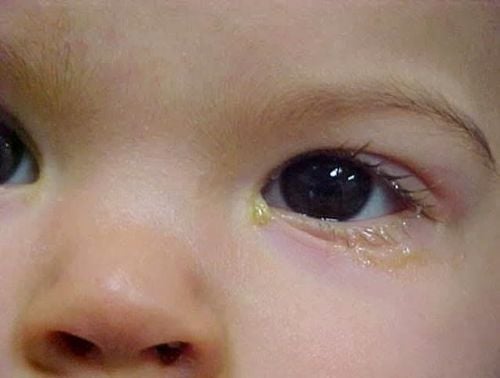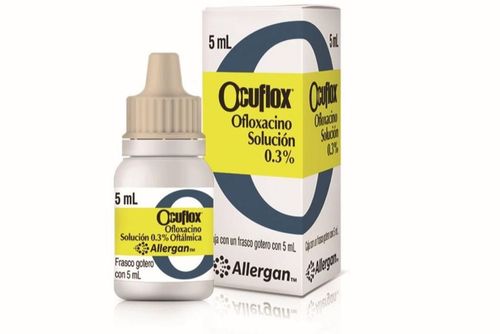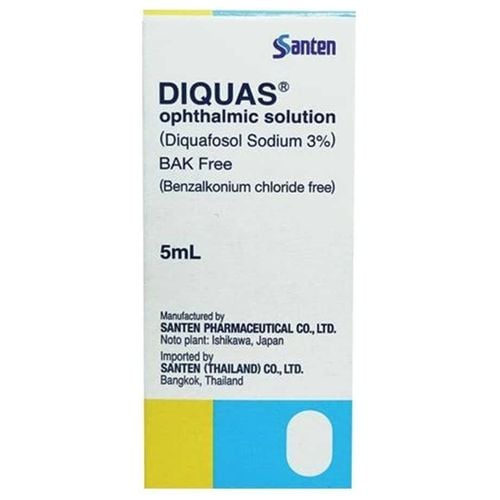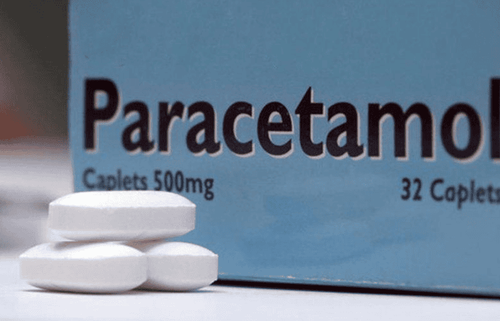This is an automatically translated article.
The article was professionally consulted by resident Doctor Duong Van Sy - Department of Pediatrics - Neonatology - Vinmec Hai Phong International General Hospital.Neonatal occlusion is not an uncommon condition and usually manifests itself in the first few days after birth. This abnormality is caused by many different causes and can resolve on its own after a period of time. However, the examination and treatment by specialists will help relieve symptoms and speed up recovery.
1. What is the disease in infants?
A blocked tear duct, also known as a blocked tear duct, is a blockage in the flow of tears in the duct system that connects the eye to the nose. The lacrimal duct acts as a catheter between the eye and the nose, starting at the tear point at the inner corner of the eye, including the lacrimal duct, the lacrimal sac, the lacrimal duct, and the lower nasolabial space.Normally, tears are secreted from the lacrimal gland, flowing into the inner corner of the eye thanks to blinking movements, following the tear duct down the nose. This explains why crying can cause a runny nose.
2. The reason for the laity principle
Anything that interferes with the flow of tears from the eyes to the nose causes tear duct obstruction in infants. Some common abnormalities include:Absence or narrowing of the lacrimal duct located in the inner corner of the eye, which is the starting point of the lacrimal duct. Congenital tear duct obstruction: Usually, there is still a thin membrane, causing obstruction of the lower lacrimal head or deformed lacrimal duct. This is the result of incomplete lacrimal formation during the fetal stage. This cause accounts for about 20% of all cases. Congenital tear duct leak. Abnormalities of the maxillofacial region also increase the likelihood of lacrimal occlusion, seen in Down syndrome. Nasal polyps that block the tear drainage of the lacrimal duct may be the cause of lacrimal obstruction in infants. U: Any tumor capable of compressing the tear duct is the cause of tear duct obstruction.
3. Symptoms of tear duct obstruction in infants
The most prominent sign of lacrimal obstruction is excessive tearing. Any cause of tear duct obstruction prevents tear drainage from the nose. Parents often detect lacrimal obstruction in infants early thanks to this sign. Newborn babies' eyes are still sparkling, even if they don't cry, full of tears, even tears fall into tears. Folks still call this sign live tears.
Newborns with blocked tear ducts produce more live tears if exposed to cold, wind, or sunlight. When experiencing this symptom, parents need to take the child to see an ophthalmologist to rule out more dangerous causes of watery eyes such as glaucoma and eye infections.
Lachromatosis may occur repeatedly concurrently with lacrimal obstruction in neonates. Normally, tears lubricate and clean the eyeball. When the tear duct is blocked, the tears are stagnant, leading to the accumulation of dirt and bacteria, increasing the risk of chronic infection. Children may face symptoms such as:
Eye discharge appears a lot when waking up. Closed eyes make the eyelids stick together. Red eyes. Red eyes are worse if children often rub their eyes with their hands. In more severe cases, the child may present with redness, pain in the corner of the eye, and discharge of pus.
If the inflammation is not treated completely, it can lead to serious complications such as abscesses of the lacrimal sac, lacrimal fistula, discharge of pus, causing much discomfort to the child.
The degree of clinical presentation varies depending on the degree of partial or complete lacrimal obstruction. When the nasolacrimal duct is completely blocked, symptoms appear more obvious and come earlier.
4. Diagnosis of lacrimal occlusion
Neonatal occlusion is diagnosed by a combination of history, physical examination, and laboratory techniques. The doctor will conduct a test to evaluate the condition of the tear duct as follows: inject fluid into the lacrimal hole in the inner corner of the eye that is suspected to have a tear duct obstruction. A stagnant pump is a sign that most likely your baby is having a problem with a blocked tear duct.To accurately diagnose the condition and cause of the tear duct obstruction in the newborn, the doctor may consider ordering more specialized tests such as X-ray and CT scan of the lacrimal system using contrast agent.
As a key area of Vinmec Health system, Pediatrics Department always brings satisfaction to customers and is highly appreciated by industry experts with:
Gathering a team of top doctors and nurses in Pediatrics : consists of leading experts with high professional qualifications (professors, associate professors, doctorates, masters), experienced, worked at major hospitals such as Bach Mai, 108.. Doctors All doctors are well-trained, professional, conscientious, knowledgeable about young psychology. In addition to domestic pediatric specialists, the Department of Pediatrics also has the participation of foreign experts (Japan, Singapore, Australia, USA) who are always pioneers in applying the latest and most effective treatment regimens. . Comprehensive services: In the field of Pediatrics, Vinmec provides a series of continuous medical examination and treatment services from Newborn to Pediatric and Vaccine,... according to international standards to help parents take care of their baby's health from birth to childhood. from birth to adulthood Specialized techniques: Vinmec has successfully deployed many specialized techniques to make the treatment of difficult diseases in Pediatrics more effective: neurosurgery - skull surgery, stem cell transplantation. blood in cancer treatment. Professional care: In addition to understanding children's psychology, Vinmec also pays special attention to the children's play space, helping them to have fun and get used to the hospital's environment, cooperate in treatment, improve the efficiency of medical treatment. To visit with experienced pediatricians at Vinmec. Please make an appointment at the website to be served.
Please dial HOTLINE for more information or register for an appointment HERE. Download MyVinmec app to make appointments faster and to manage your bookings easily.














